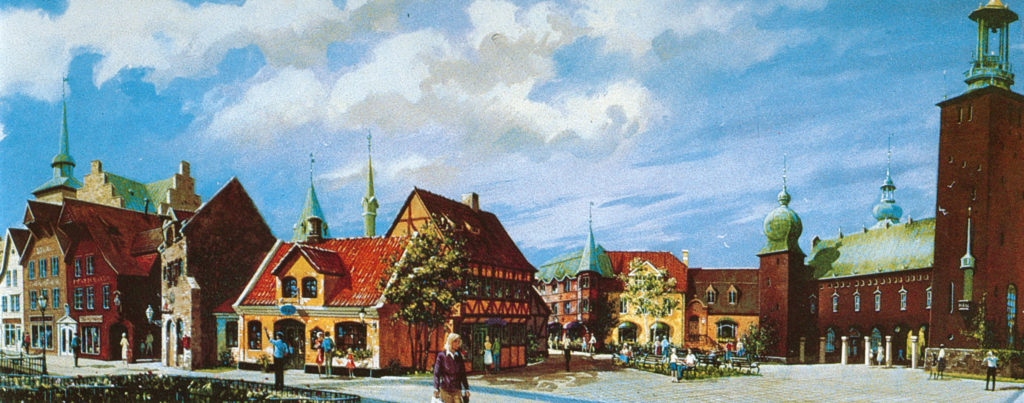
The ultimate goal of World Showcase – from the position of its funders – was to increase tourism and recognition of their represented countries.
By offering authentic merchandise and real, local cuisine prepared by actual citizens, World Showcase would be a marketing wonder; like a food truck festival that leaves you hungry for more, the opportunity to sample the culture of each participating country would be a coup for sponsors in the long run.
El Rio Del Tiempo in the Mexico pavilion had certainly illustrated the draw of a ride, sending guests drifting through the history of the country via “small world” style vignettes. But the charming attraction was more or less a hidden gem, tucked away into a dark corner of the imposing Mexico pavilion…
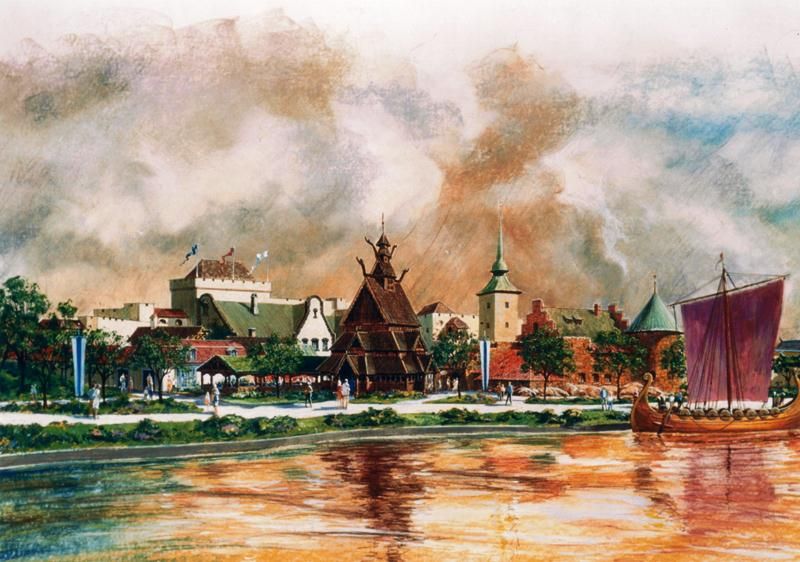
For Norway, Imagineers had something more planned. The ornate Scandinavian village would have its authentic craftsmen, its ornate shops, its Stave Church exhibit, and its royal banquet halls. But at the back of the cobbled streets would be something the likes of which Epcot had never seen before.
Beyond the pavilion’s main courtyard was an inconspicuous entry to a hidden gem of Epcot’s attraction line-up. With Norway on board to finance the creation of a pavilion including a dark ride, Disney Imagineers were able to get to work on the preliminary plans.
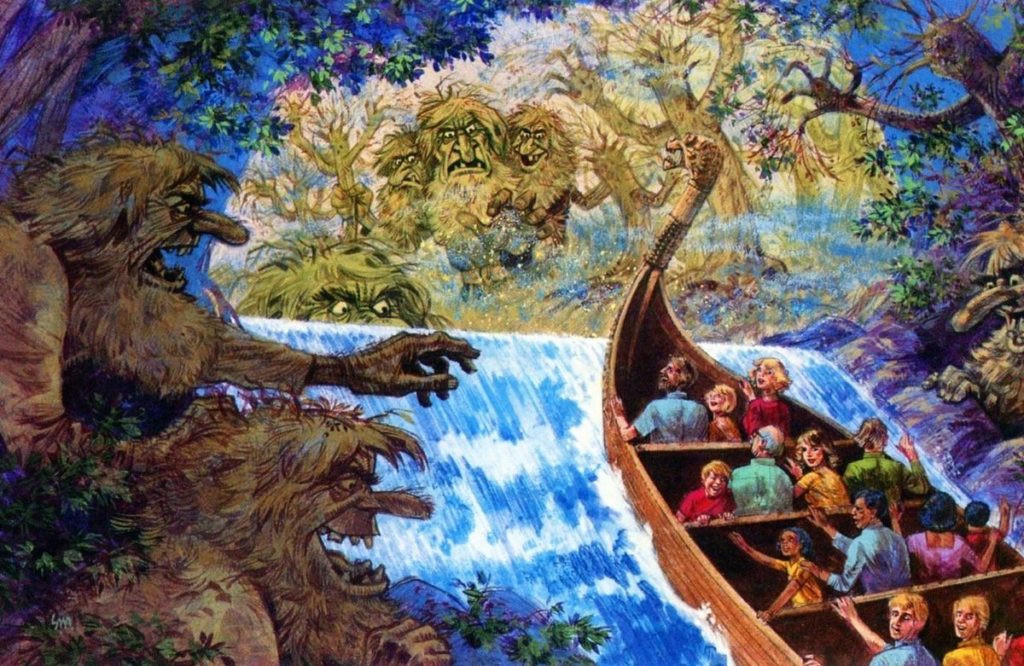
Norway would house a dark ride on par with the original, sweeping dark rides of Epcot’s Future World: full animatronics, decadent storytelling, and immersive sets – a headlining attraction that put Norway on the proverbial map.
The task fell to Bob Kurzweil (designer of Disneyland’s Alice in Wonderland dark ride), fan-favorite Marty Sklar, and producer Randy Carter, who met with the heads of some large Norwegian corporations (like Selmer-Sande and Kloster) who would – if they found the plans adequate – give big money to Disney for the design, development, and construction of the pavilion and its central attraction.
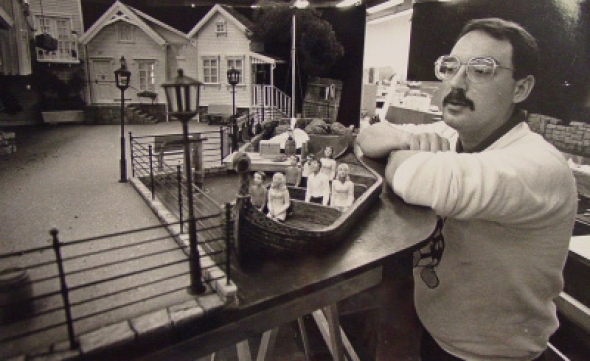
The group settled on the idea of a flume-style boat ride and the novel idea that it would travel both forwards and backwards (which had never been done before).
Joe Rohde (best known for his later design work on Disney’s Animal Kingdom and his later role as the park’s spokesman and emissary) did early conceptual illustrations and models based around Bob’s first idea: that the ride should be a fantasy ride through the mythical stories of Norway focused primarily around the legends of trolls and the myths and folktales of such creatures that permeate the country. (Ever heard of The Three Billy Goats Gruff? Thank Norway.)
Telling the real story
Norwegian representatives flew back to Imagineering to hear Disney’s proposal.
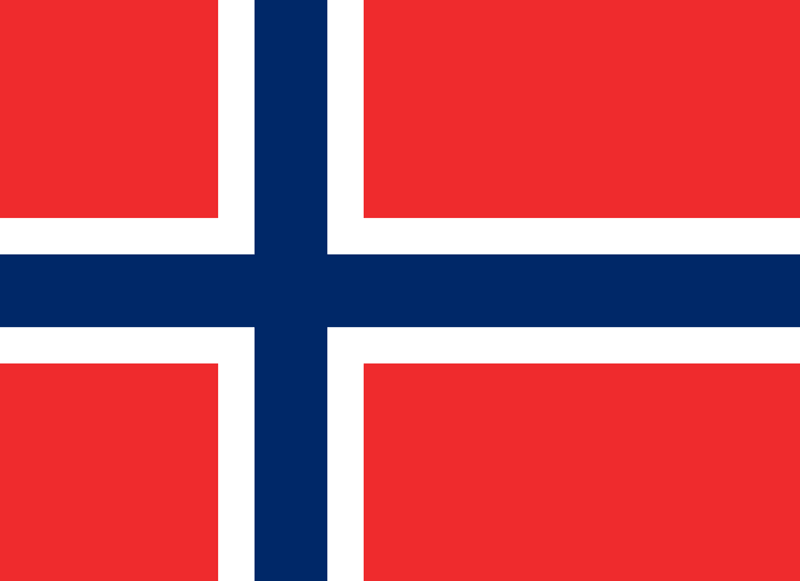
To the chagrin of the design team, the Norwegian representatives had no interest in having their country represented by trolls. They wanted an attraction to spur tourism and give Norway a memorable identity; they wanted a travelogue of sorts, showcasing the natural wonders of the country, its place in a modern industrial world, and the rich, real history of the nation.
(And to be fair, they were probably right to hold their ground. Imagine if a Norwegian theme park offered to build a United States pavilion, with its single ride themed around the legend of Big Foot. We’d probably feel that they were missing the big picture a little bit, right?)
By the in-depth account of Paul Torrigino, one of the ride’s model makers turned Production Designer, the Norwegians made it clear that if they were to finance a ride for Epcot’s Norway pavilion, it needed to hit a few specific topics: ‘Vikings, a fishing village, polar bears, a fjord, an oil rig, and maybe a troll or two.”
That was quite a lot to fit into one stew.

Rightfully, the four principle designers (Bob, Randy, Joe, and Paul) put their heads together to try to figure out any logical way that it could work. Disney Imagineering – known the world over for its inventive storytelling – was left grasping at straws to connect the time periods, themes, and styles that Norway wanted in exchange for funding.
Then came the winning idea: that the ride could use the plot device of time travel to explain the mismatched sights and stories. The ride could begin in a historic fishing village in the era of Vikings before traveling into a marsh populated by folktale creatures, who would send the boat through time to the present. While it wasn’t the most refined concept Imagineering had ever devised, it would serve its purpose and show just the elements of Norway that investors wanted. With a loose plot to connect the scenes, work intensified and Disney announced its newest attraction would open in 1986: SeaVenture.
Opening the gates
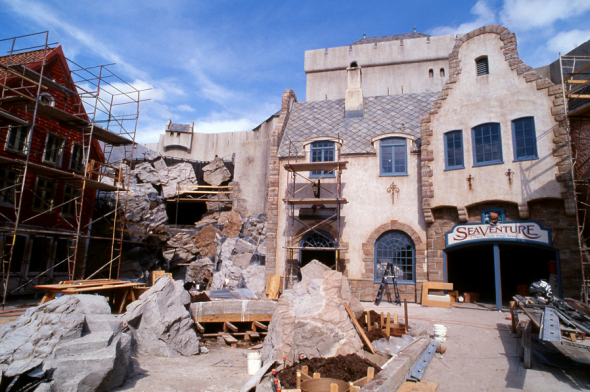
You read that right. The ride inside of the Norway pavilion was called SeaVenture until at least March 1988 (as that’s when the above photo was taken). By May, the streets of “Norway” were opened as the pavilion soft-opened, and guests who visited saw a shiny new marquee sporting the ride’s final name: Maelstrom. However, the ride remained closed.
As expected of any new and technologically advanced attraction, Maelstrom took a while to work out its kinks. The attraction missed the soft opening of the Norway pavilion in May 1988. On June 3, the crown prince Harald V of Norway visited Epcot to dedicate the pavilion in a ceremony broadcast live to his home country. Still, the doors to Maelstrom remained sealed. It would be another full month before Maelstrom would make its debut: June 5, 1988. Shortly thereafter, Disney took out newspaper ads promising something grand:
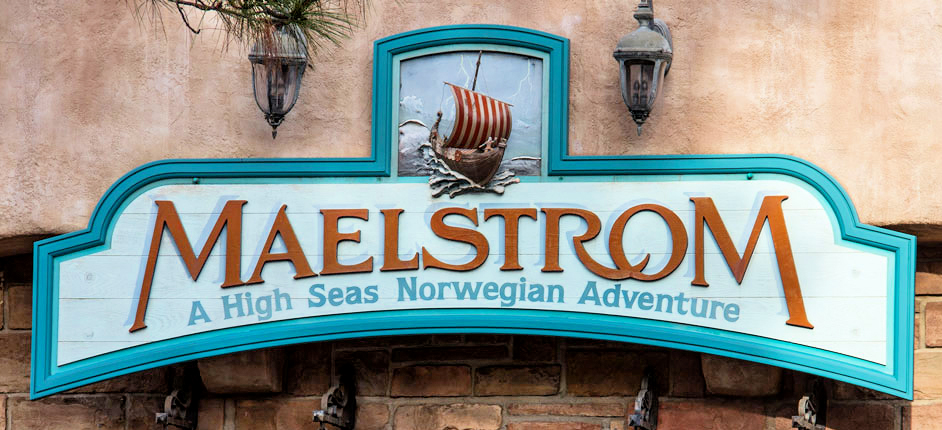
“When was the last time you went over a waterfall… backwards? Had your life threatened by a nasty, old three-headed river troll? Came within a whisker of a 12-foot polar bear? Challenged white-water rapids? And braved a thunderous, storm-tossed North Sea?
The last time may be the first time you ride “The Maelstrom,” the new thriller at EPCOT Center. It’s a sea adventure of legendary proportions, now open in the fabulous, new Norway Showcase. So come on. Conquer ‘The Maelstrom.’ All you need is the guts of a Viking.
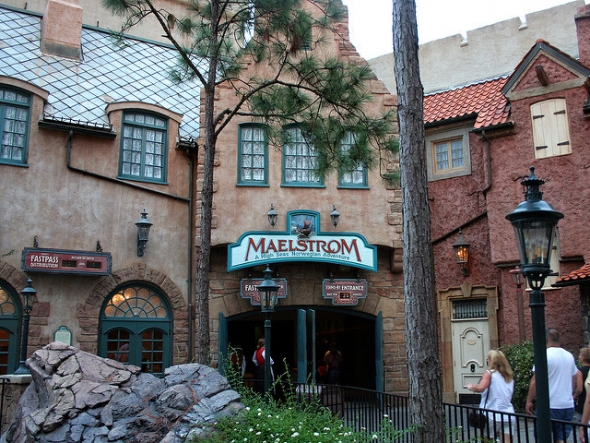
Your journey through the wild waters of Maelstrom begins in the Norway pavilion under the unassuming marquee. The wooden doors that it rises above lead to an even more unassuming queue line. The ride’s queue is contained in a hallway painted teal, lined very simply with small Norwegian flags and flanked with a large, antique-style map showcasing Milestones in Norwegian Exploration and tracing the routes of the Great Age of Vikings in 800 A.D.
One of the more memorable elements of the queue was the massive, wrapping mural painted above the loading area. The mural became a fan favorite, depicting industrial workers, Viking ships, trolls, cruise ships, and fishing villages all meant to represent the past, present, and future of Norway – just like Maelstrom itself.
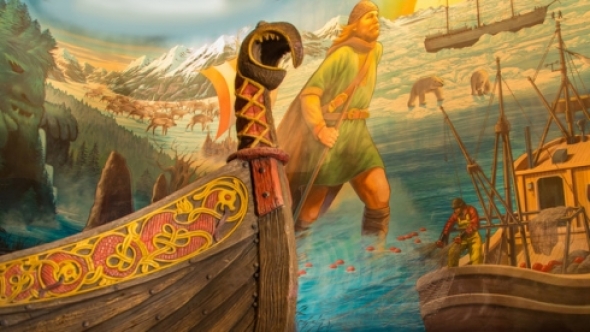
Beneath this memorable and hearty backdrop, a conveyer belt carries a sixteen-foot Viking longboat from about the 10th century, complete with a carved dragon head bow. Once guests are comfortably seated, the conveyer belt re-engages and advances the boat into the churning waters of the flume’s river. Into a dark, rocky tunnel and around the bend, the atmosphere becomes tense as the journey begins…
On the next page, we’ll step into our own Viking longboat and take to the high seas aboard Maelstrom…



This was a great article. I personally believe that Epcot should have nothing to do with Disney’s characters or the cinematic world of Disney. Don’t get me wrong, there is a place for that, and its not Epcot.. It’s every other Disney park. I went to Epcot the year it opened and have gone for many years after. I was there last year, and don’t feel the need to return any time soon, based on these particular changes. If Frozen is such a huge IP why not give it to the Magic Kingdom where it belongs with the other Disney classics. I feel that what they did to the park and the changes that they are being made, are wrong, and there is a better way to promote the park and bring more admissions.